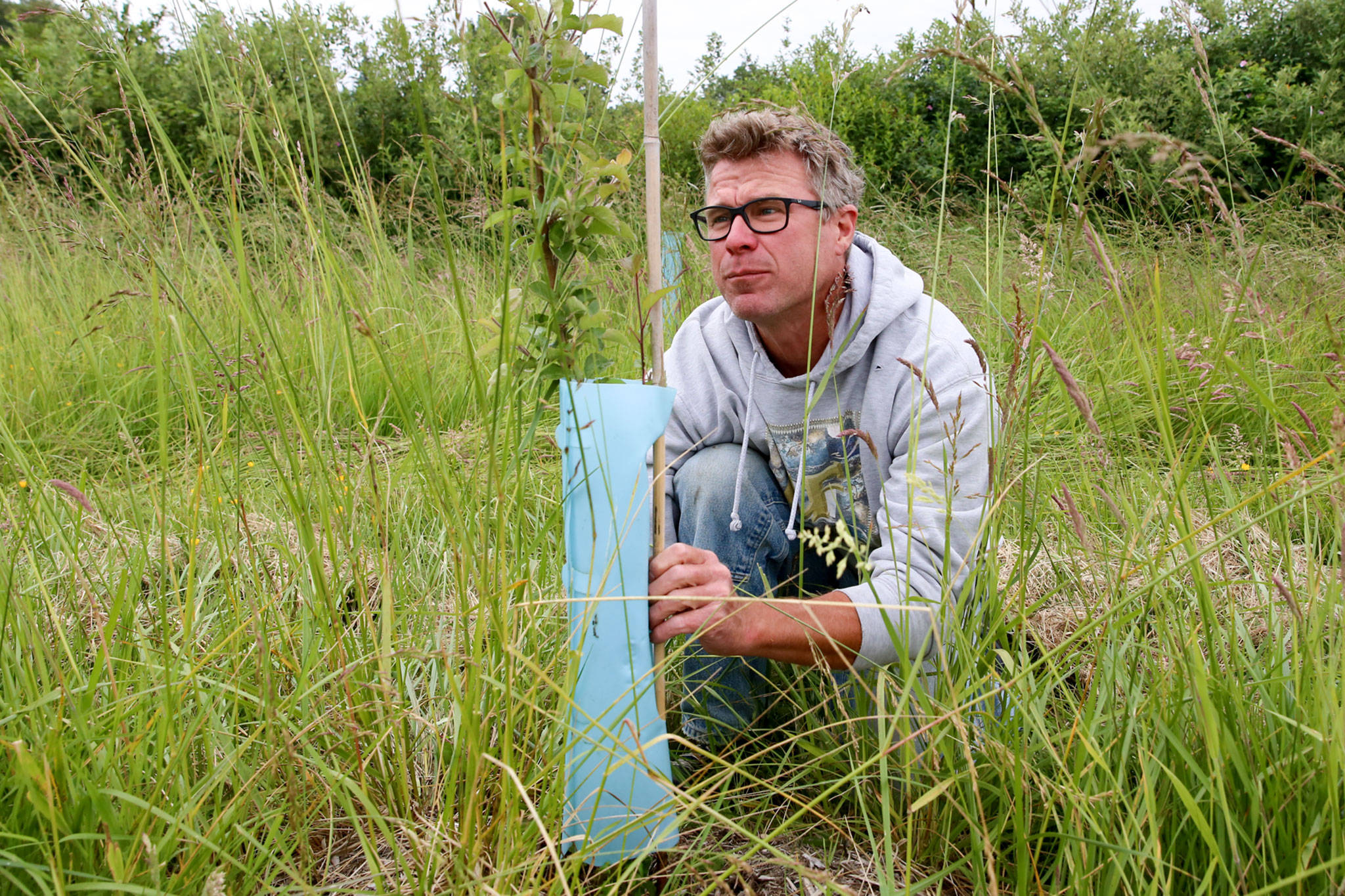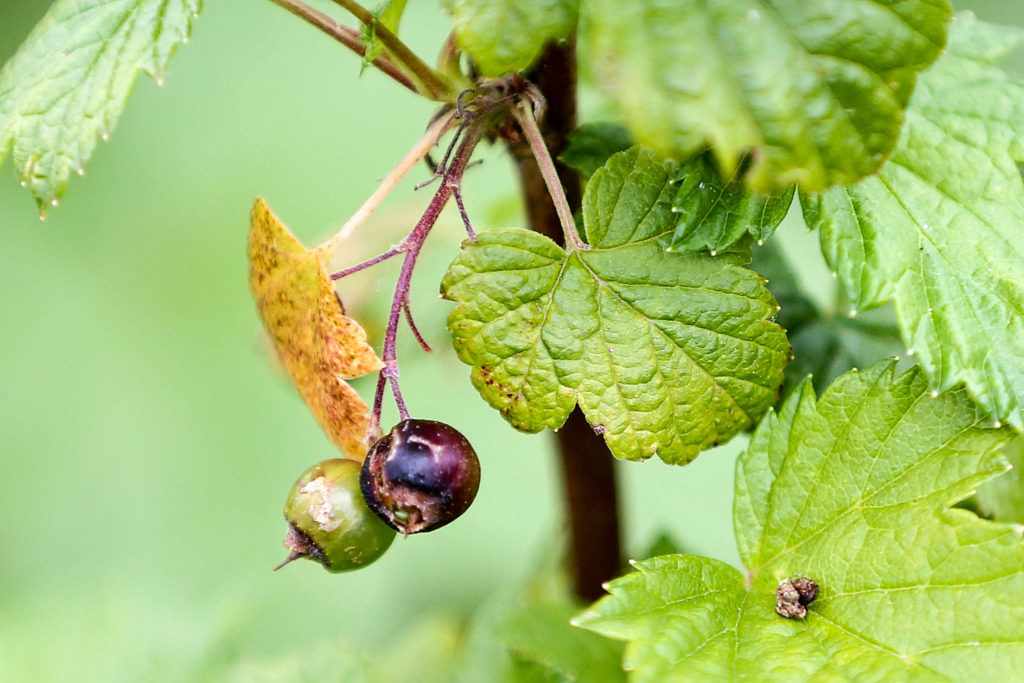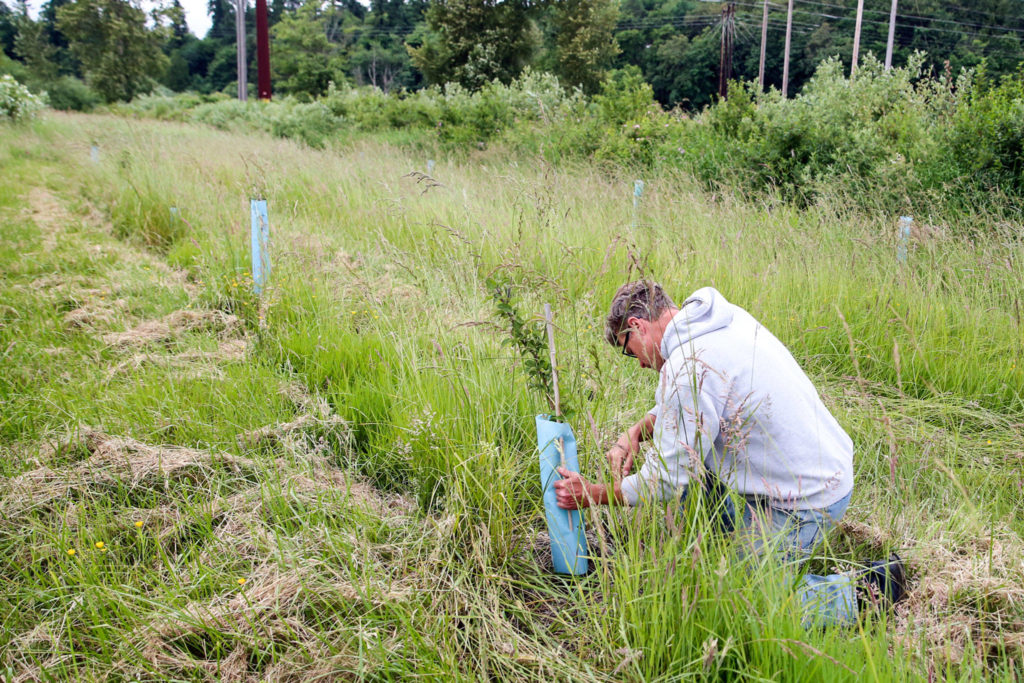SNOHOMISH — Raising Cane Ranch doesn’t look like a typical farm. You won’t find neatly tilled rows or evenly spread sprouts on Nick Pate’s 40 acres.
Instead, his crops mimic a natural ecosystem — with layers of black walnut trees, aronia berry bushes and currant plants.
Pate’s food forest is one form of agroforestry, an ancient practice with a new name.
The technique mixes trees and shrubs into food crops, which benefits soil and water quality while helping protect farmers from harvest failure.
A few small Snohomish-area farms like Pate’s are early adopters of the practice, Snohomish Conservation District Resource Planner Carrie Brausieck said. The district would like to see agroforestry spread to larger-scale operations.
As climate change leads to more volatile weather extremes, this practice can help provide some security for farmers as well as aid in addressing global-scale problems in water pollution, poor soil health and greenhouse gas production.
“Farming has been taking resources from the land in a sense,” Brausieck said.
But agroforestry allows farmers to harvest food in a way that’s protecting natural resources and regenerating the land.
“It’s creating a way for farming to be part of the solution,” she said.
What is agroforestry?
The practice of agroforestry draws on what’s called traditional ecological knowledge — such as the methods Native Americans have used to grow food throughout history.
“We understood that natural resources had to be harvested in a sustainable way,” said Andrew Gobin of the Tulalip Tribes Natural Resources Department. “That was always our teaching — to make sure there’s always something to harvest for tomorrow.”
While they didn’t call it agroforestry, Gobin said his ancestors cultivated crops in the areas the plants grew naturally.
Today, the Tulalip Tribes work with the U.S. Forest Service to grow huckleberries and wild blueberries in forests.
Farming with and around trees was common before World War II, Brausieck said. The agricultural community has since moved away from that, but agroforestry reintroduces that biodiversity.
“It’s a cultural shift we’re asking,” she said. “We’ve spent decades ripping trees out of farming land.”
The return to agroforestry is prompted by a growing body of research, mostly out of the University of Missouri, backing up the method’s success, Brausieck said.
In adding trees back into the landscape, agroforestry works with nature, rather than against it. It’s a “regenerative” practice that protects natural resources and adds diversity to the ecosystem while still producing crops.
This concept isn’t just the next food trend, Brausieck said, and it isn’t the “new organic.”
“Regenerative agriculture is taking it to the next level,” Brausieck said. “Organic farming is normal farming without certain inputs. Regenerative is looking at the ecosystem and recreating that.”
There are five basic types of agroforestry. While the terms themselves are complex, the idea is simple — blending agriculture and forestry allows farmers to supplement their normal production with high-value tree and shrub products, such as Pate’s walnuts.
Alley cropping is a practice that involves growing food between rows of trees.
Silvopasture integrates trees into livestock grazing lands. It provides short-term income from grazing while the trees are grown for long-term profit.
Windbreaks are barriers of trees and shrubs used to protect crops and livestock from winds.
Riparian buffers, a zone of bushes, trees and other vegetation, help reduce farm runoff into streams.
Forest farming is the most complex form of agroforestry and involves layers of production. For example, mushrooms growing under berry bushes, with vines intermixed and trees as an upper canopy.
The benefits
Camano Island’s Ananda Farm has used agroforestry techniques since its inception in 2012. In each garden on the 15 acres, partial owners Zach and Hailey Abbey mixed perennial root systems, like fruit trees, in with annual crops.
As the trees get established, Zach Abbey said they’ve had to fertilize and irrigate their crops much less.
“A lot of the work the trees are doing on their own we were having to recreate in different ways,” he said.
That’s because of something called hydraulic lift, Brausieck said.
Tree roots reach down into the soil, and at night they bring water up closer to the ground.
A tree planted in the middle of an open field increases the biodiversity in the soil around that tree by tenfold, Brausieck said. That means the crops grown in that area will be more nutritious, passing the benefits on to human consumers.
Established agroforestry systems are also more resilient to climate change than stand-alone crops, Brausieck said.
In the face of increasingly dry, hot summers in Western Washington, agroforestry systems may better withstand drought.
“A big open field is going to dry out fast,” Brausieck said.
A field with silvopasture or alley cropping will hold moisture much longer.
“You’re going to fare much better than the guy next door with a big, open field of lettuce,” she said.
In case of a complete crop failure, agroforestry also gives farmers a backup plan.
If a hot summer takes out a whole field of lettuce, agro-farmers have a tree or berry crop to fall back on.
For Pate at Raising Cane Ranch, agroforestry is helping protect him from the root rot killing his raspberry bushes, which had been the main source of income on his 40-acre farm.
After the fungus hit in 2013, Pate planted cider apple trees in rows between the ailing raspberry bushes. As the shrubs die off, the trees will become his new principal crop.
Farming for the future
Agroforestry isn’t just for small, niche farms. The Conservation District hopes to see more conventional farmers adopt the practice.
“A few creative types that are willing to try something new are early adopters,” Brausieck said. “But most farmers in our area don’t know what agroforestry is.”
While this type of farming has been slow to catch on in Western Washington, producers in other areas of the country use it more extensively.
Silvopasture, with trees and shrubs integrated into grazing lands, is being used on a large scale in Oregon, Brausieck said.
Michael Gold, director of the Center for Agroforestry at the University of Missouri, said windbreaks are commonly used in the plains states to protect crops from wind and dust.
It’s difficult to tell exactly how widespread the practice is.
The U.S. Census of Agriculture asks farmers about two methods — alley cropping and silvopasture — but Gold said the most recent survey didn’t include any specification for what those entail.
According to the census, from 2012 to 2017, the number of farms using those practices increased from 2,725 to 30,853 nationally.
In Washington, that number jumped from 82 to 1,075.
No Snohomish County farmers claimed those methods on the 2012 census. In 2017, 57 local producers said they use either silvopasture or alley cropping.
As awareness spreads, Gold said agroforestry has the potential to help farmers tap into high-value markets.
“You can make a living on 50 acres of chestnuts just as well as 10,000 acres of corn,” he said.
This fall, the Conservation District is launching an initiative to spread awareness about agroforestry practices.
The district will help farmers design their agroforestry system for free, and there’s some first-come-first-serve funding available to help with initial costs.
With ecological benefits for the land and economic possibilities for farmers, Brausieck said agroforestry has huge potential for keeping agriculture viable in Snohomish County.
“It hits all those conservation aspects that we work toward as a Conservation District in one land use,” she said.
Julia-Grace Sanders: 425-339-3439; jgsanders@heraldnet.com.
Talk to us
> Give us your news tips.
> Send us a letter to the editor.
> More Herald contact information.



























